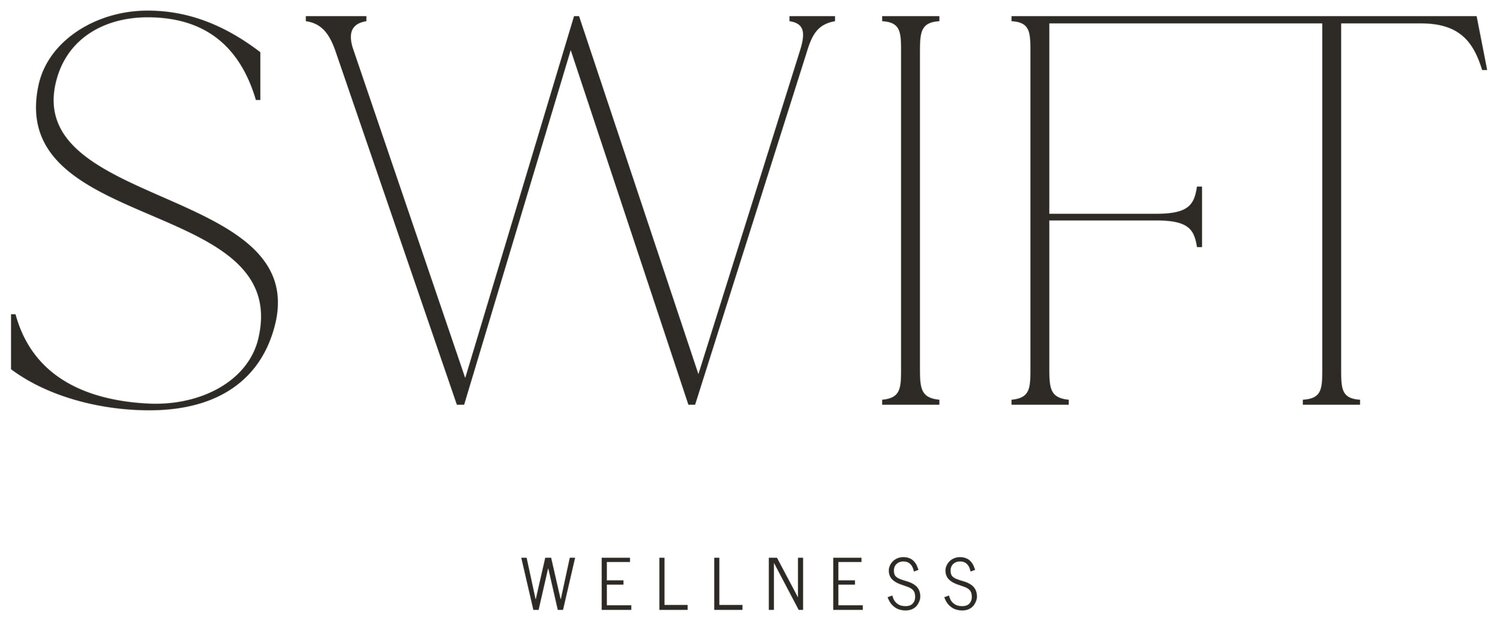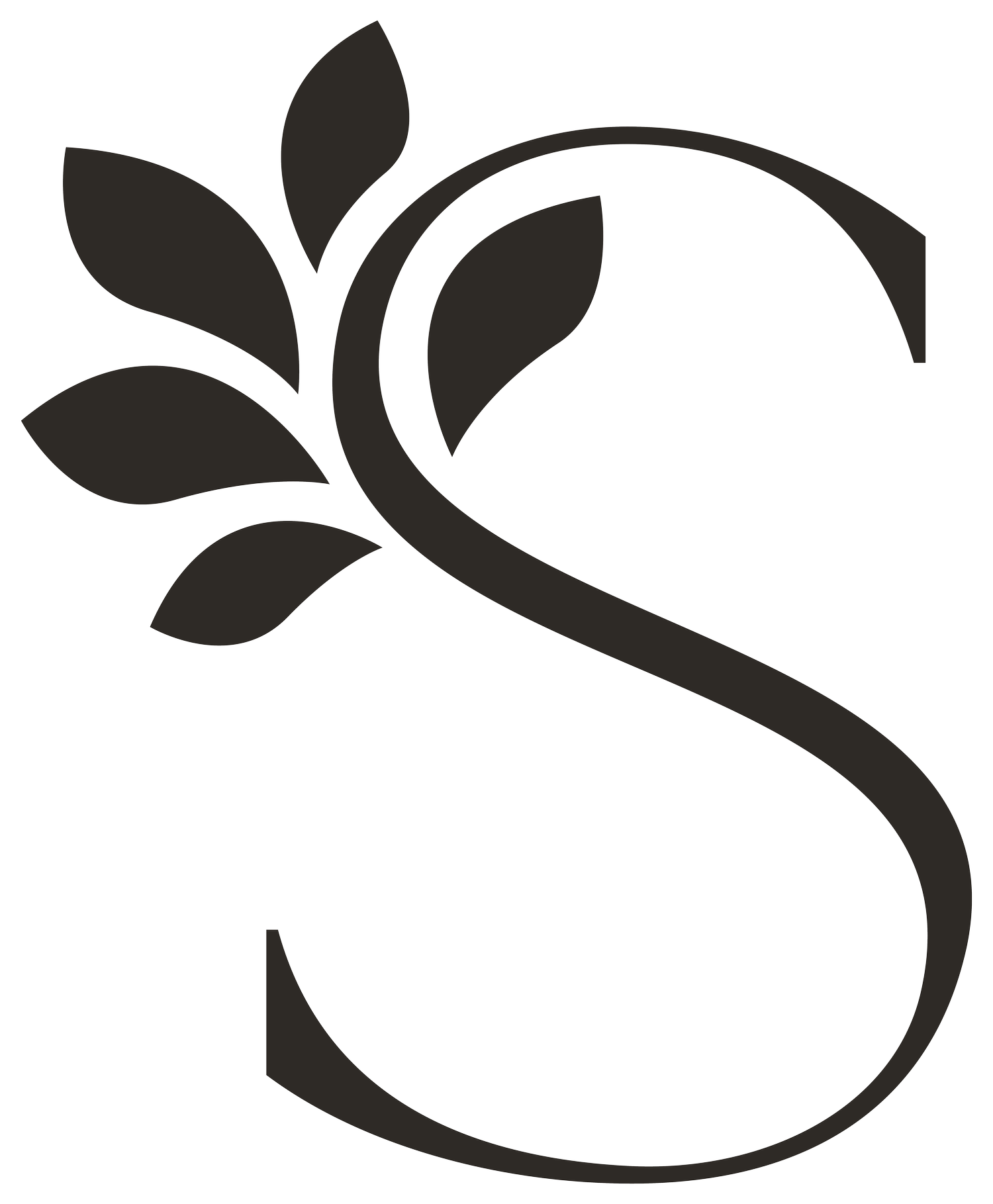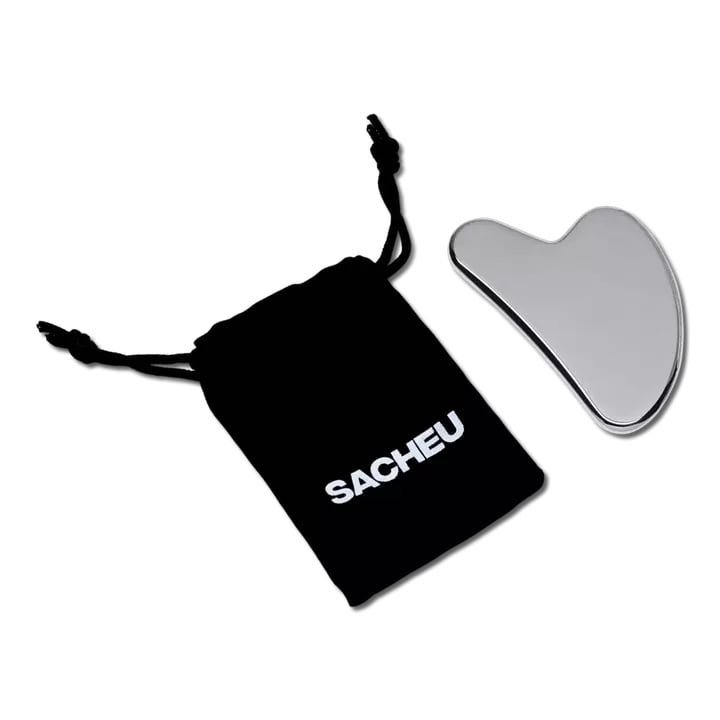How To Gua Sha For The Ultimate Facial Routine
This page may contain affiliate links. We may earn a small commission for any purchases made through these links. Click here for the disclosure statement.
There’s a good chance you’ve come across the practice of gua sha recently—maybe in “that girl” vlogs or in lists of self-care ideas. Gua sha is a skincare practice that comes from Traditional Chinese Medicine (TCM) that serves as both an ancient ritual and treatment modality.
Whether you’re looking to add slow, intentional beauty practices into your routine, looking for a natural glow during this summer, or you’re hoping to reduce puffiness and the signs of aging, a gua sha routine is for you. The routine can be quick and relaxing, allowing you to reconnect to yourself, while also benefiting your skin.
Gua sha has gained popularity for its holistic approach to skincare, offering a unique blend of physical and emotional benefits. Beyond gua sha’s aesthetic results, it also promotes a sense of inner calm and balance. By incorporating this ancient ritual into your daily routine, you not only nourish your skin but also cultivate a deeper connection with your body and mind. As you glide the smooth (or wavy) edges of the gua sha tool across your face, you engage in a meditative practice that engages self-care and self-reflection, encouraging an intentional relationship between yourself and your surroundings.
First Things First: What Is Gua Sha?
As mentioned above, gua sha is an ancient skincare ritual. In practice, gua sha routines are simple: you gently scrape a smooth stone across your skin to help drain lymph, ease stress and sculpt certain areas. You can gua sha most of your body—though I’ve seen the face, chest, and arms detailed the most—which can be both relaxing and therapeutic. It’s no wonder that gua sha is gaining popularity as a self-care beauty ritual.
The intention with gua sha is to clear the body of stagnation, allowing qi (sounds like “chi”) to flow freely and promote health. Traditionally, gua sha has been used along the back to reduce inflammation and promote better circulation. In those cases, a practitioner will do gua sha for you. It can also be paired with acupuncture for bonus benefits. But, there are no needles required to gua sha, though you can use acupressure to relieve tension in places like the jaw or temples to get the best of both worlds.
What Are The Benefits Of Gua Sha?
Like many self-care rituals, gua sha will be a subjective experience. However, it’s known to relieve some conditions like migraines, neck pain, and can even help with anxiety and insomnia, according to the Cleveland Clinic. Gua sha also helps drain lymph from the face, giving you a more defined, “snatched” look.
In my own practice, gua sha is quite relaxing. Sometimes I’ll have a morning gua sha routine to relieve jaw pain and reduce puffiness under my eyes. On other days, I opt for an evening gua sha instead, which helps me calm my mind and hydrate my skin after a long day on my computer.
One of the top gua sha benefits is the resulting luxurious feeling. Your skin will feel warm and more supple, due to better circulation. It’ll also have a natural glow, in part due to the oil of your choosing. If you have sensitive skin like me, you may have added redness but it’ll fade over time, likely between 10–45 minutes.
More holistically, the results of gua sha extend beyond its effects on the physical body. As you engage in this ritual, you may find that it brings a sense of overall relaxation and well-being. The intentional and mindful nature of gua sha allows you to disconnect from the stresses of daily life and create a tranquil space for self-care. It can serve as a form of meditation, promoting mental clarity and emotional balance, especially as you move the stone in repetitive patterns. Whether you choose to incorporate gua sha into your morning routine or as an evening wind-down, the practice offers a rejuvenating experience that can prepare you for your day or help you decompress from it.
How To Use Gua Sha On Your Face
In many online resources, gua sha is described as scraping or dragging a stone across the skin, but after incorporating it into my routine for the better part of a year, I’d say the more appropriate verb is gliding. Before you use a gua sha stone (more on those later!) you’ll want to wash your face and apply an oil: not too much, but more than a few drops. You want your skin to be damp enough so it doesn’t feel like the stone is pulling at your skin, creating friction. The stone should glide across your skin so that you can feel muscles and fascia underneath, just like you would in a light-touch massage.
Different resources will recommend starting your gua sha technique in different places. Some beauty brands, like Wildling, say that you should always begin the practice at the back of your neck, moving the stone downward. On the other hand, Yina—a TCM-based beauty brand—says you can start anywhere, like using the stone as a comb along the scalp line.
Once you begin, you’ll want to follow a few guidelines. First, repeat each upward motion at least 5-10 times. Second, don’t apply pressure, just glide the stone across your skin at a slight angle. And lastly, always finish with long downward motions to drain the lymph from your body.
So, if you’re using gua sha along your jawline or cheekbone, you’ll move the stone from a central point upward and outward, and after 10 or so cycles you’ll move the stone out and down toward the jaw, neck, and chest. This motion will encourage lymph to flow down and drain from the body. There are plenty of YouTube videos and online guides to teach you the motions on how to gua sha correctly.
Gua sha can be enhanced by combining it with acupressure techniques, unlocking a multitude of benefits. By targeting specific points on the face, such as the temples, jawline, hairline, and cheeks, you can release congestion, relieve tension, and promote other outcomes. Gently applying pressure to these points during a gua sha session can soften the jaw, encourage hair growth, improve circulation, and stimulate overall relaxation for a comprehensive self-care experience. This is great for people who have already built a gua sha practice and are looking to remedy specific areas or symptoms, like allergies or TMJ. You can use a chart or map to locate specific facial acupressure points and circle the gua sha tool on those areas.
Before gua sha, facial tension and puffiness may be present. After a session, the face feels relaxed, rejuvenated, and more sculpted. Better blood circulation and lymphatic drainage can lead to a brighter complexion and reduced signs of facial congestion—who doesn’t love that?
What Tools Are Needed?
To complete your gua sha routine you’ll need a facial oil and a gua sha stone. The former can be any type of oil, and you’ll want to use about a quarter-sized amount on your face and neck. I’m currently using the Chia Facial Oil from Cocokind. As for stones, there are many to choose from. Some stones have different shapes and edges to allow for different movements, acupressure access, and comfort both in your hand and on your skin.
Gua sha stones are made of various materials as well, though you may see rose quartz, natural jade, and Bian stone the most because of each stone’s reported benefits. Some popular stones are the Empress Stone made of Bian stone, the Sacheu stainless steel model, and this jade stone from Rena Chris. If you don’t want to invest in a stone yet, your hands can work as well, though they won’t have as smooth a texture as the stones.
The Best Gua Sha Stones:
You can do gua sha with your hands and fingers, but a gua sha stone makes the technique easier and the overall practice more relaxing. Try one of these gua sha stones if you’re a beginner.
Image: Wildling
Gua Sha Collection
Wildling
Image: Ulta
Image: Amazon
Gua Sha Facial Tool
Rena Chris
This deep green jade stone has smooth edges that will fit in your hand easily and glide across your face.
Image: Sephora
Gua Sha
Mount Lai
Use this beautiful and uplighting rose quartz gua sha to soothe and smooth your skin as well as lift your emotions.
Image: Kitsch
Stainless Steel Gua Sha
Kitsch
Opt for this stainless steel gua sha for an easy-to-clean sculpting tool that is non-porous and hygienic.
The Best Facial Oils
If you’re wondering what oil to use with gua sha, try one of these hydrating facial oils after you cleanse your skin.
Image: Sephora
100% Plant-Derived Squalane
The Ordinary
This affordable oil is super hydrating and lightweight. It absorbs fast, but will really help your gua stone slide over your skin.
Image: Sephora
Mini Squalane + Vitamin C Rose Firming Oil
Biossance
This vitamin C face oil also has squalane and rose oil to help hydrate, firm, and soothe the skin.
Image: Sephora
Heavenly Sixteen All-In-One Face Oil
Summer Fridays
This 16-in-1 facial oil combines 16 vegan oils to build skin’s elasticity, reduce the look of fine lines, and moisturize.
Image: Ulta
Chia Facial Oil
Cocokind
Packed with omega-3 fatty acids, this facial oil is perfect for hydrating your skin for a soothing and sculpting gua sha routine.
How To Clean Your Gua Sha Stone
Follow these cleaning steps after each use to maintain hygiene and preserve the quality of your gua sha stone over time, though your stone will last well if you do this on a weekly basis instead.
To clean a gua sha stone, begin by rinsing it under warm water to remove any surface dirt, oils, or residue accumulated during its use. Once rinsed, apply a small amount of mild soap or a creamy facial cleanser onto the stone; then lather and gently scrub the surface, making sure to clean the flat surfaces as well as the edges and nooks. Be careful not to use any harsh chemicals or abrasive materials that could damage or scratch your stone. Afterward, rinse the gua sha stone again under warm water to remove the soap and any remaining dust or dirt.
Next, gently pat the stone dry with a clean towel, avoiding any rough rubbing motions that could potentially harm the stone's surface. Allow the gua sha stone to air dry completely, and be sure that the stone is completely dry before storing it to prevent the growth of bacteria.
Incorporating gua sha into how you take care of your skin can lead to brighter and healthier-looking skin, as well as less puffiness. Although this is a great practice all year long, adding a gua sha routine will get your skin summer-ready. You may also even find gua sha energizing, meditative, or satisfying, based on the time of day you perform the motions and the results you see. If you’re looking for a more defined jawline or cheekbones, consider using gua sha to sculpt these areas.
It’s a lovely practice to add to your existing skin routine, especially during the drier months of the year. And, in the summer it can help hydrate skin after long days in the sun or surrounded by dry air. Though it may seem a bit woo-woo, if you incorporate a gua sha routine into your overall skincare regimen consistently, you’ll see results!

















